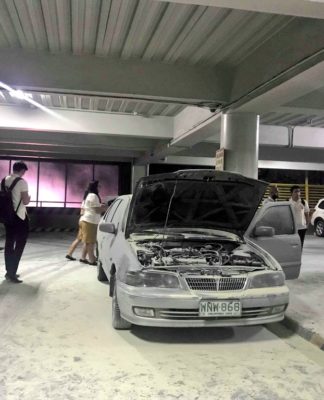
06 March 2014, 9:45 p.m. – THREE Thomasians were recognized for their scientific projects in the annual Bank of the Philippine Islands-Department of Science and Technology (BPI-DOST) Science Awards held at the Mind Museum in Taguig earlier today.
Senior Biology student Francisco Bolinao IV, the lone Thomasian among the seven finalists for the Best Project of the Year, was nominated for his research titled “Functional Elucidation of Mrc20 by RNA Interference (RNAi).”
Bolinao’s study employed gene silencing technology through RNAi to battle White Spot Syndrome Virus, a viral disease that kills huge populations of shrimps and has been a major reason for the decline in the country’s shrimp aquaculture industry.
“Lately, this method is being used as a possible cure to diseases such as cancer and AIDS because these [diseases] also interact with our genes,” Bolinao said.
Rikki Macolor, an Electronics Engineering student, designed a lighting project that will allow urban poor communities to build their own low-cost, low-powered solar harvesters.
“I built a circuit together with solar panels and batteries that were cheap and available locally,” Macalor said. “We simplified [it] in terms that normal Filipinos would be able to understand.”
Another Thomasian awardee is Dan Rustia, an Applied Physics major who developed a way to charge low-powered electronic gadgets such as calculators or cell phones even without batteries.
“Every time you apply pressure to the calculator it can be charged even without batteries. You don’t have to keep buying batteries anymore because disposing them would be harmful to the environment,” Rustia said.
Alexander Cruz of the University of the Philippines (UP)-Diliman bagged the 2014 Best Project of the Year for his study titled “Design, Optimization, and Field Testing of a Plasma-Enhanced Optic Fiber Reactor for Hydrogen Production via Visible Light-Driven Photocatalytic Water-Splitting.”
Jessa Makabenta of UP-Los Baños and Kevin Colina of the University of San Carlos won as first and second runners-up, respectively.
Established in 1989, the BPI-DOST Science Awards recognizes budding scientists and researchers whose works can contribute to the fields of mathematics, physics, engineering, chemistry, biology and computer science.
The finalists are chosen from BPI-DOST’s partner-universities nationwide, which include the University of Santo Tomas, Ateneo de Davao, Ateneo de Manila, De La Salle University, Saint Louis University, Silliman University, University of the Philippines (Diliman and Los Baños), University of San Carlos, and Xavier University (Cagayan de Oro).
Randy Maranan, BPI Foundation executive director, said students were becoming more aware of societal problems as shown by the kind of research projects submitted.
“The projects they have been presenting focused on immediate concerns of society like energy management, health, and food security,” Maranan said.
Technological and economical feasibility, quality, relevance, and research innovation were the criteria used in judging the projects.
The Best Project of the Year winner received 50,000 pesos and a scholarship grant from the DOST Science Education Institute. First- and second-place winners received 30,000 pesos and 10,000 pesos, respectively.
This year, the BPI Science Awards marked its 25th anniversary. Its partnership with DOST started in 2005.
“The partnership with DOST provided us with access to a structured methodology,” Maranan said. “Since then we have seen an improvement in the quality of projects being presented.” Andre Arnold T. Santiago














